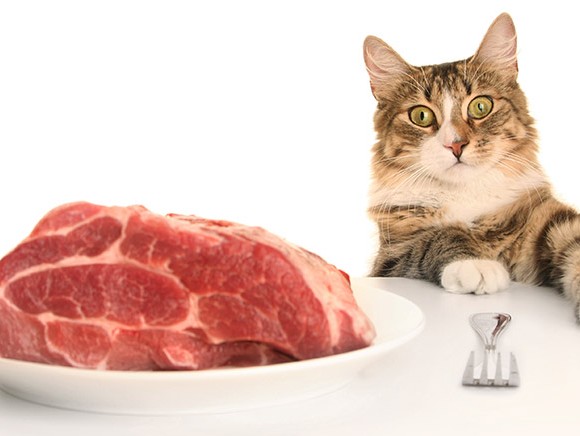
Virtually all organisms, including humans, can carry parasites: worms, fleas, lice, ticks. Toxoplasma gondii is one of the most common parasitic zoonoses worldwide and it can have severe consequences for pregnant women in particular. But what is it? And how can it be prevented?
A parasite is an organism that lives off another organism (the ‘host’). The burden of a parasite on its host can vary strongly, from situations in which the parasite has minimal negative impact to ones in which it causes serious diseases or even death. Parasites can live either on (such as lice and ticks) or in a host (think of worms, for example, or the well-known human parasite Plasmodium falciparum which causes malaria). Estimates put the number of malaria cases in 2015 at more than 200 million people, resulting in 438,000 deaths. Malaria is transmitted by mosquitoes that inject the parasite into the human blood when they bite. Other examples of notable human parasites include Trichinella, Cryptosporidium, Chiardia and Toxoplasma. This article will discuss Toxoplasma gondii.
Toxoplasmosis is a parasitic disease that is caused by Toxoplasma gondii: one of the most common parasitic zoonoses worldwide. Data from the Dutch National Institute for Public Health and the Environment (RIVM) shows that approximately 40% of the Dutch population have been infected by this parasite at some point in their lives. To prevent human infection it is important to understand the life cycle of T. gondii. The parasite has a sexual and asexual development cycle.
The sexual reproductive cycle only occurs in felines (the ‘definitive host’). The cat is infected by picking up oocysts or by ingesting meat containing infectious tissue cysts. New oocysts then form in the small intestines and are released into the environment via the faeces. These oocysts become infectious after a short maturation phase of two to three days and in the right conditions they can remain infectious for a year or more. This long period increases the chance that other hosts (virtually all warm-blooded organisms, including humans) can become infected.
The infection risks for people have not yet been fully documented. Consumption of raw or undercooked meat is regarded as a major source of infection, but oocysts in cat faeces are also regarded as a risk. You can come into contact with oocysts when emptying a cat’s litter tray, when doing some gardening where cats have been or by eating unwashed vegetables.
The asexual cycle occurs once the oocysts have entered a different host (such as mice, dogs, chickens, cows, goats, pigs or people). In this part of the cycle, tachyzoites (an active form of the parasite that rapidly reproduces by division) invade the host’s cell tissue where they rapidly multiply until the cell ruptures. This process is repeated a couple of times resulting in the formation of tissue cysts containing up to 3,000 bradyzoites. This is another stage of the parasite, with a low metabolic rate and minimal reproduction. Tissue cysts can be formed in various parts of the host’s body but are predominantly found in the brain, eyes, muscle tissue and heart.
In general, a human infection occurs without the person even realising it. However, the ‘dormant phase’ of bradyzoites in tissue cysts can also be the cause of recurrent symptoms if the host has a weakened immune system. The situation is very different for pregnant women: infection with T. gondii in the early stage of pregnancy can lead to complications in the baby (vision defects or neurological deficits) or it can cause a spontaneous miscarriage. An infected person is not directly infectious to people around them, although the infection can be transmitted through the transplantation of organs containing tissue cysts.
New detection techniques
The current detection techniques for T. gondii (serological testing and PCR detection) can demonstrate the presence of the parasite but not whether it is actually active. Animal testing (mouse or cat) is currently used to demonstrate whether the parasite is active. This makes it difficult (expensive, slow and socially undesirable) to gain a more detailed insight into the infection route in humans. TNO, RIVM and knowledge partner CVI are now embarking on a two-year public-private partnership (PPP) focused on the development of a quick test which will enable living T. gondii to be distinguished from dead T. gondii. Such a test will then enable the definition of parameters for inactivating T. gondii in meat products through processing steps or additives and hence for guaranteeing a safer product.
It is known that Toxoplasma gondii can be inactivated by freezing (at least 48 hours at minus 12 degrees Celsius or colder) or heating (to 67 degrees Celsius or higher), as well as through processing or combinations of salt, acid and additives. Therefore, products containing meat that has not been sufficiently treated – such as steak, tartare, roast beef, raw beef sausage, cured meats or game – pose a potential risk of infection. Until there is sufficient understanding of the infection route(s) of T. gondii via the consumption of meat products, it is wise for pregnant women in particular to continue to heed the current advice: avoid eating raw or undercooked meat and take care when gardening or emptying the cat litter box.
Keen to know more? Send an email to [email protected]
Source: ©Lisa A/Shutterstock.com